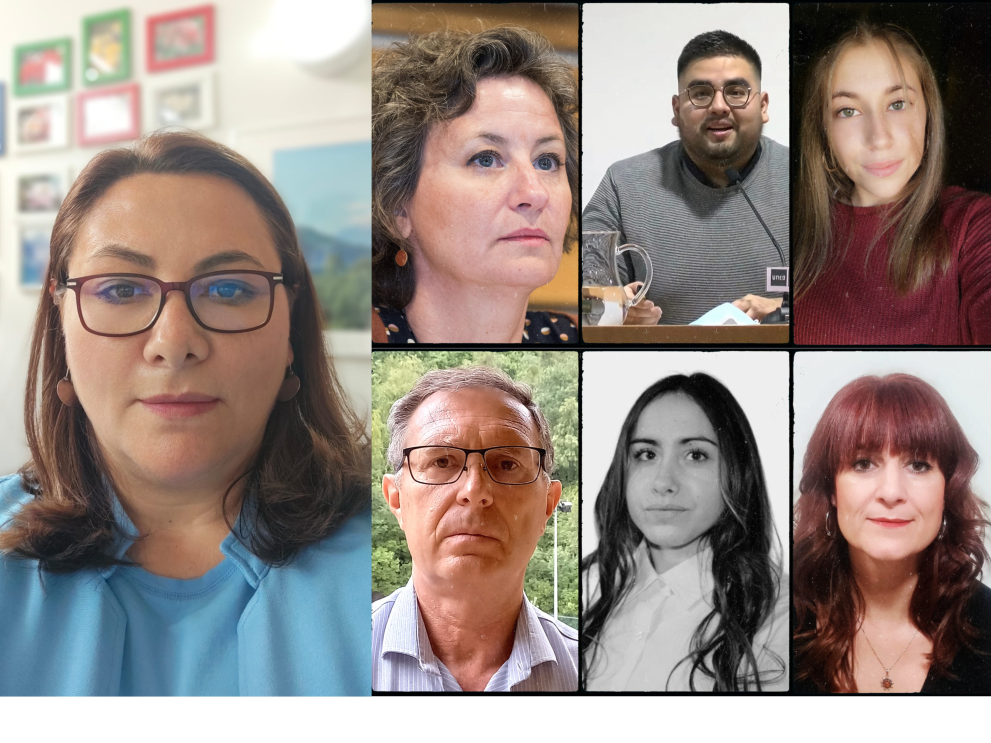
The University of Alcala’s Green Public Procurement research group was founded in 2017 by Professor Xemena Lazo Vitoria. The following members of the research group have participated in the research on school canteens: X. Lazo Vitoria; M. Giménez Baldazo; C. Aznaran Carmelino; E. Ferreira Teles; M. Armada Seguín. And as external members: B. Fernández Ruiz and J. Martínez Martínez.
As members of the University of Alcala’s research group "Compra Pública Verde" (Green Public Procurement), could you tell us a bit about the inception and purpose of the group?
The Green Public Procurement research group was created in 2017, thanks to the initiative and motivation of Professor Ximena Lazo Vitoria. The aim is to produce high-quality research, useful for decision-making, with an interdisciplinary approach. This approach is very rare but, in our opinion, highly recommended in order to understand complex issues and better address their solutions. Applied to reality, this means that it is highly advisable to maintain a strong communication channel between those who define the technical specifications and those who define the legal and economic aspects. In fact, going green is a team effort and requires a comprehensive approach.
Recently the group carried out a study called 'Is public procurement in Spain sufficiently green? An empirical study of school canteens'. Could you describe the purpose, scope and methodology of your research?
This research on school canteens in Spain was prompted by the lack of quantitative studies with an interdisciplinary approach in the field of public procurement. The study aims to provide contrasting information to support public decision-making and valuable information for social and economic actors in the food sector.
Why? Food is a strategic sector for decarbonisation (Climate Change 2023 Synthesis Report - IPCC). In the context of the European Green Deal, the "A Farm to Fork" strategy singles out school canteens and announces the development of mandatory minimum criteria. It is essential to prepare this sector to accelerate its transformation, to take up the challenge of mandatory greening and to transmit strong educational values on sustainability and climate change mitigation to the new generations (GreenComp - European Commission).
Later, the question "Are public school canteens in Spain green enough?" became one of the central objectives of the National Research Project: "Green Public Procurement: a strategic tool against climate change. Sectoral analysis: food, buildings, mobility and depopulation", Reference: PID2021-122131OB-IOO funded by the Ministry of Science and Innovation and co-funded by the European Union.
In order to carry out the study, it was necessary to design an ad hoc methodology to collect, systematise and analyse the information. A total of 424 calls were studied for the period 2018 - 2022. The choice of this particular period responds to the entry into force of the new Public Procurement Law in Spain, which in turn transposes the European Public Procurement Directives of 2014 (new legal framework) into national law.
Did you face any challenges in conducting this research and, if so, how were these barriers overcome?
One of the challenges of the research was the format in which information on public tenders for school canteens was available. It was necessary to read the contract documents one by one in order to extract the data related to sustainability along the contractual items (object of the contract, solvency, technical specifications, award criteria and special conditions of execution).
What were the most notable or surprising results of the study?
We have found environmental clauses throughout the entire contractual process. There is a clear predominance in the appearance of technical specifications, which allow for the establishment of minimum environmental standards. However, the most significant implementation in terms of environmental content comes hand-in-hand with the award criteria. We were also surprised by the predominance of price, with a large percentage of tenders exceeding 49%, even reaching a weight of 100%.
Finally, referring to the title of the study, do you believe Spain has sufficiently green school canteens and, if not, what are your main recommendations for improving the sustainability of cafeterias?
Our results show a clear transition from a non-environmentalised system to the inclusion of the green approach in school canteen specifications, driven by the 2014 procurement directives, national legislation and the impetus given by the European Green Deal. However, there is still a long way to go and planning, professionalisation, simplification and transparency are particularly important.
In order to improve understanding of the concepts, avoid mistakes or confusion and overcome resistance to change, adequate training of all actors involved in the process (public sector, economic operators, users and consumers) is crucial.
We have identified ample room for improvement on issues such as the choice of the most appropriate contractual moment to include environmental clauses, the possibility of fine-tuning the wording of these clauses (avoiding repetition of legal requirements, duplication of environmental requirements, or the inclusion of obligations but on an optional basis).
Progress can also be made in defining more specific monitoring systems that facilitate transparency and control of commitments in a simple way for both public administrations and companies.
Details
- Publication date
- 25 March 2024
- Author
- Directorate-General for Environment
